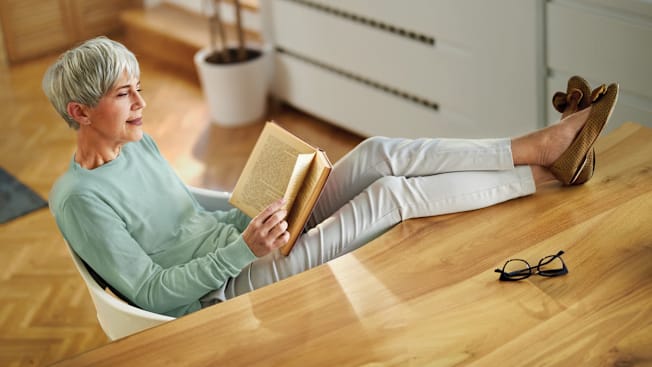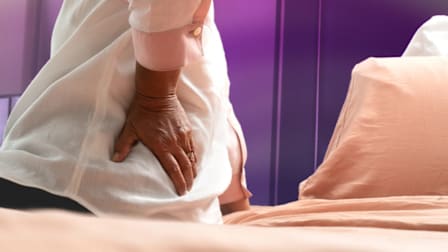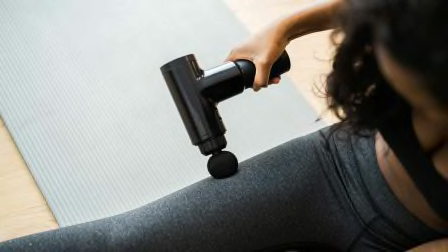How to Stop Varicose Vein Pain
Find relief from swelling and achiness with self-care or, when needed, surgery

Varicose veins—which affect about a third of all adults—look knotty, swollen, and twisted. They can also be "a source of pain and discomfort, especially if you’re standing or walking for long periods of time," says Cassius Chaar, MD, a vascular surgeon at Yale Medicine in New Haven, Conn.
In severe cases, they can lead to more serious problems, such as ulcers (open sores) on the legs or, according to one study, clots in the deep veins of the legs.
How to Self-Treat Varicose Vein Issues
If you have little or no pain, the following can ease discomfort and swelling and prevent vein issues from worsening, Chaar says. All improve blood flow.
• Elevate. Raise your legs above your heart level for about 30 minutes three or four times a day by propping them up on pillows or against a wall. This can enhance blood flow and reduce leg swelling.
• Exercise. Just about any aerobic activity should increase blood flow to your veins, says William Shutze, MD, a vascular surgeon with Texas Vascular Associates in Plano and secretary of the Society for Vascular Surgery. Walking may be especially helpful because it activates your calf muscles and brings blood from your varicose veins back to your heart. Pointing your feet up and down or standing on tiptoe periodically throughout the day may also help. Swimming may be a good exercise, Chaar says, because it puts your legs at heart level.
• Consider compression stockings. These gently compress your legs, improving blood flow through your veins. You can buy them over the counter at pharmacies, surgical supply stores, or online. They’re available as knee-highs, thigh-highs, and pantyhose. "Knee-high stockings are usually enough for most people," Shutze says.
When to See a Surgeon
If you have a lot of pain or significant swelling or skin discoloration, see a vascular surgeon. They can evaluate how well the valves in your leg veins are working to keep blood flowing back up to your heart. You’ll probably be advised to wear prescription-grade compression stockings that are custom-made for your legs.
For those who are overweight or have very swollen legs, your surgeon may also recommend a compression pump, a plastic sleeve to wear on the lower legs for several hours each day that compresses the veins even more than stockings. For skin ulcers, prescription compression bandages can help you heal.
If you’ve tried the measures above and you’re still uncomfortable, you have skin ulcers that won’t heal, or your skin is damaged, you may need vein ablation, Shutze says. In some instances, your surgeon may recommend a "superficial" intervention like this right away.
Vein ablation, done under a local anesthetic and usually in a surgeon’s office or a hospital outpatient center, uses lasers, radio-frequency energy, or a mechanical device to close varicose veins, rerouting blood flow through other leg veins. If done for medical reasons, Medicare will usually cover the procedure.
"About half the time, that’s all the treatment necessary to relieve symptoms," Shutze says. But ablation won’t remove varicose veins. For that, you’ll have to have sclerotherapy, an office procedure where a surgeon injects a substance called a sclerosant into the veins to break them down. Because this is considered cosmetic, it’s usually not covered by Medicare. Costs vary depending on a variety of factors, like your location.
Editor’s Note: This article also appeared in the September 2024 issue of Consumer Reports On Health.




















